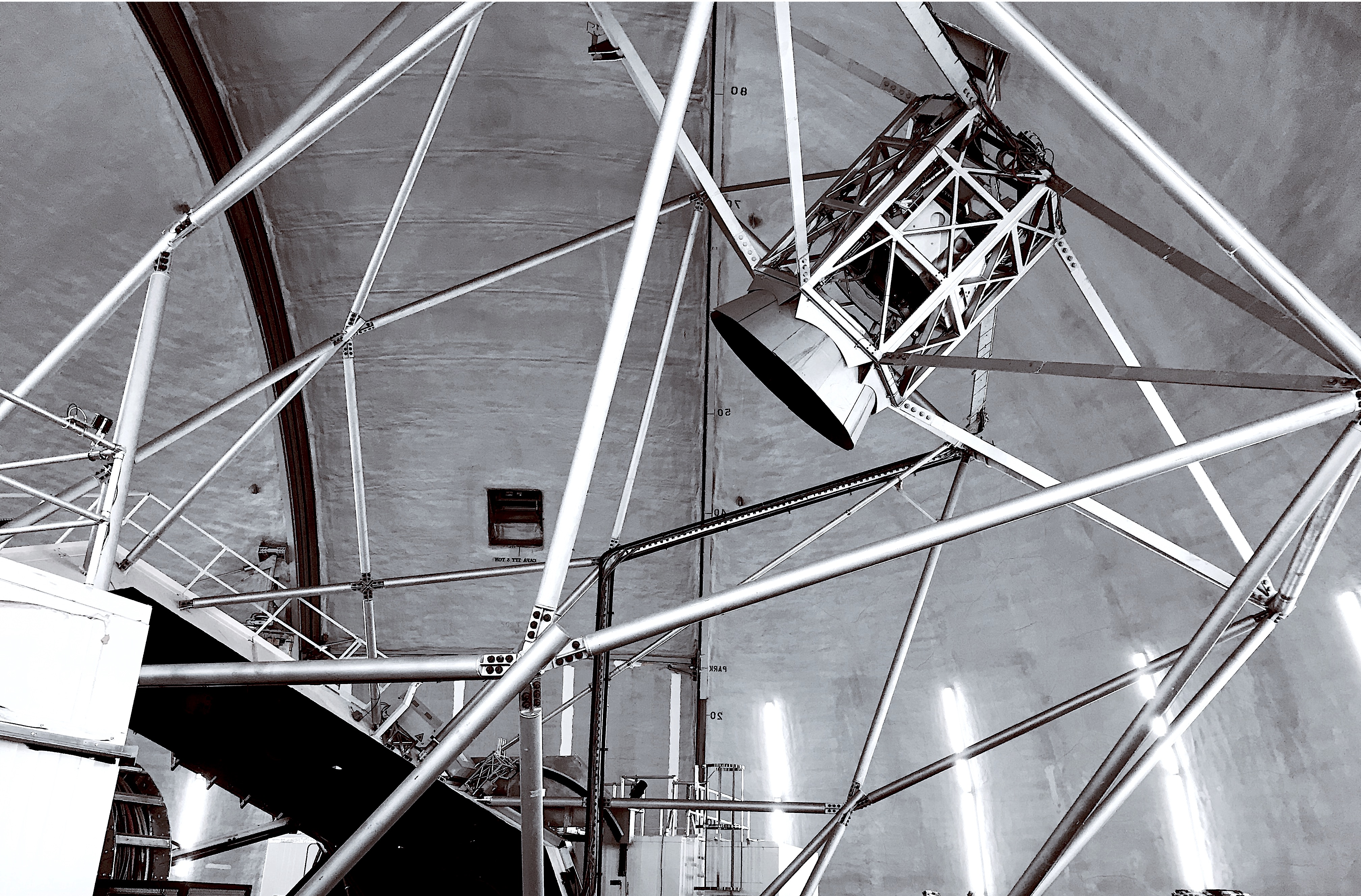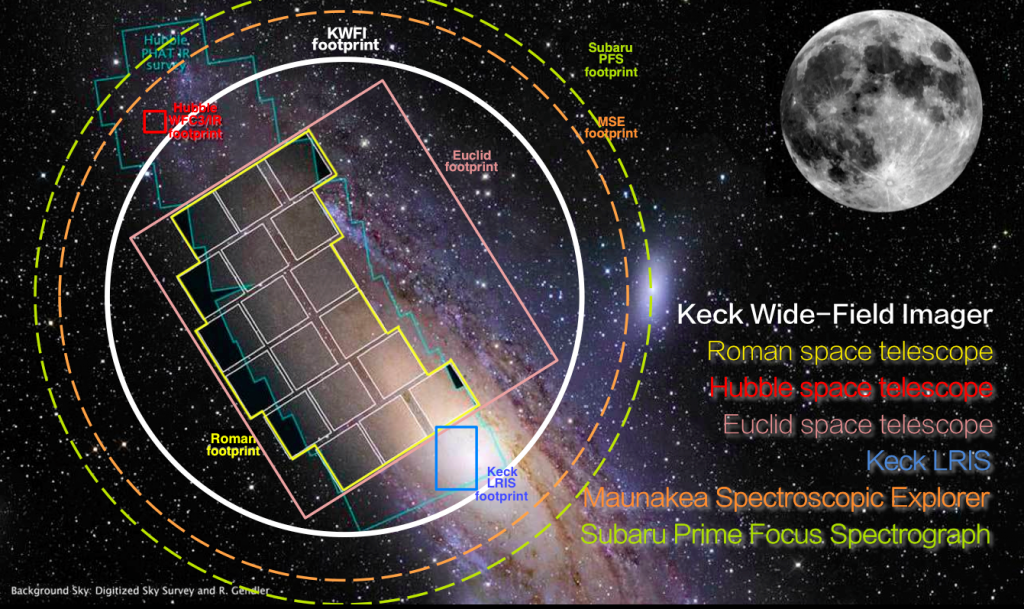
The KWFI concept is driven by the increased science demand for wide-field imaging and its need in nearly all areas of science. In fact, wide-field imagers are the highest demand instrument on their respective telescopes. The original Keck telescope design included a 30’ x 30’ (dual-arm) prime focus imager, designed by Harland Epps, as a core facility instrument (Nelson, Mast, & Faber, 1985, Keck Observatory Report 90). In our similar 1.02-degree diameter design, the optical elements have a 1-meter diameter primary lens, comparable to other 4-8m-class telescopes. The entire unit fits well inside a Keck f/15 secondary module (Figure 1). The design of the Keck top end is less restrictive to a prime focus camera than other similar telescopes (e.g., Subaru), with modular instrument exchange similar to Keck Cassegrain focus and can support a 2-ton instrument with dimensions ~2 x 3m.
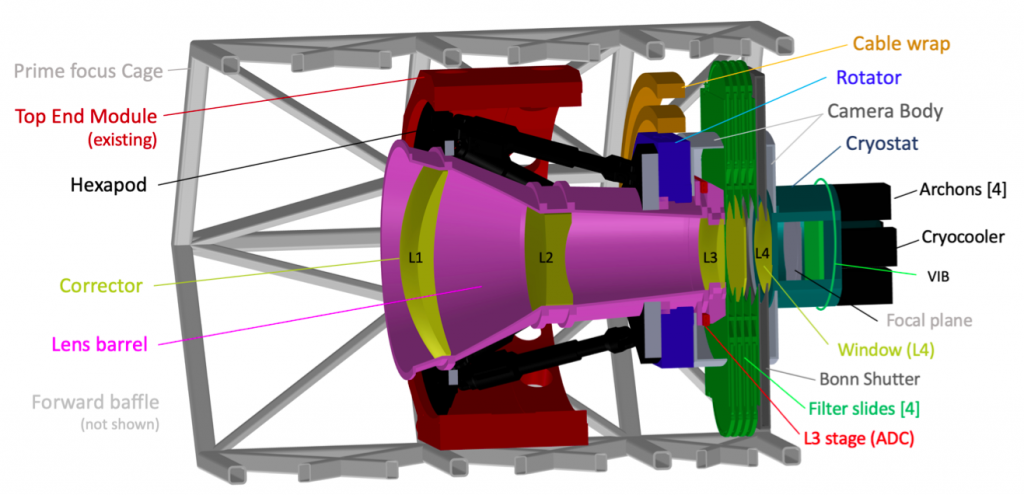
The optical design for KWFI is a very high throughput (95-98% over all wavelengths), simple 4-element fused silica system with UV-optimised coatings. The fourth lens acts as the dewar window. In addition, a novel active Atmospheric Dispersion Corrector (ADC) is employed that uses the hexapod to slightly adjust the instrument and enacts a purely lateral movement of one of the internal lenses. This approach is very effective in correcting for atmospheric dispersion and eliminates the need for additional lenses that lower throughput with additional surfaces and add weight and cost.

KWFI can be exchanged in less than ~2 hours in the day to accommodate scheduled nights. We are exploring a deployable secondary mirror as part of the KWFI package. Such a capability would add full flexibility in scheduling and rapid change from KWFI to all other available instruments, enabling new science and fast time domain capability. KWFI will have < 15 sec readout times, fast filter exchanges within that time, and software that will enable near-real-time data reduction to further enable new science.

Illustration of the KWFI installation.

Hexagonal deployable secondary mirror and laser launch
The deployable secondary mirror is shown as the gold hexagon. The baffles are shown extended and the laser launch package is at the rear of the instrument.
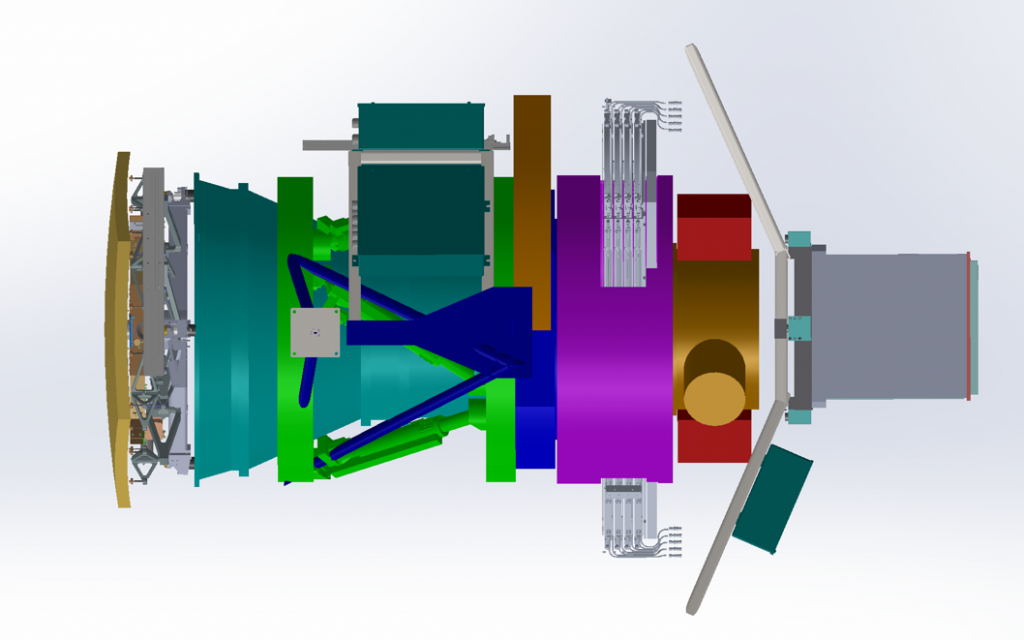
Side view of the KWFI with the deployable secondary (deployed) and the laser launch package
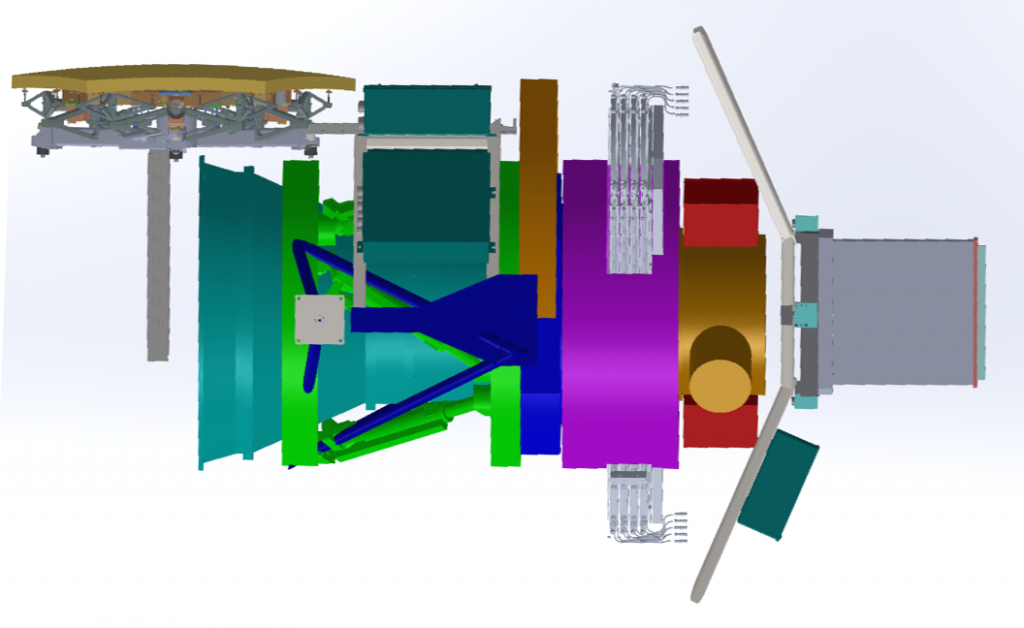
Similar to above, but with the deployable secondary stowed to enable KWFI imaging
KWFI is a collaboration of the following institutions:











